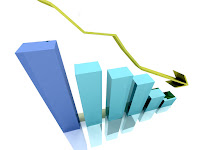The Markets Are All The Rage
Panic and an exuberance of negative views, leads to panic selling driving down share prices. There is no logical reason for such rationale, unless stocks were bought in speculation and nothing is really known about the company whose shares you just purchased on a whim. A market will have its ups and downs, be turbulent in nature this is a guarantee.
Once the volatility gives way if you have chosen good investments they will bounce back and carry on with their growth. Companies with great revenues, a well diversified range of products and that are pushing the boundaries of potential, are always good investments to have in your portfolio mix.
What's Causing The Volatility?
Volatility by it's very nature occurs to bring markets into balance. The reason for the volatility is due to the discrepancy in the intrinsic value. Fundamental analysis needs to occur to see if both qualitative and quantitative factors support the current stock price. Essentially this will provide a true outlook if a business is in favor or out of favor with the market. If out of favor than how much is the current valuation overvalued by? - Investopedia . The following reasons are some of the more pressing issues currently on a macroeconomic level:
- Quantitative easing seen throughout Europe and Japan, high levels of debt have caused excessive liquidity being provided to those regions. All the while no definitive timeline in sight for repayment of debt.
- Even though the US has shown some headway and positive results, the strong US dollar makes the exports unattractive for exporters.
- Current stocks are priced moderately high attached with a lot of expectations factored in for further increased intrinsic value that just simply is not there.
"The intrinsic value reflects how much the business underlying the stock is actually worth if you would sell off the whole business and all of its assets." - Source4. The looming dread of the interest rate hike is making the market wary as well. The idea has been thrown around for quite some time. Further causing uncertainty is the issue, at what point in time will the "Fed" make this adjustment happen.
Don't Hit The Panic Button And Embrace The Dark Side
Hitting the panic button too soon, can cause you to miss the timing of the market. This equates to missed profits, impacting your portfolio value resulting in a very costly affair.
The bottom line is that investors should train themselves to embrace volatility in the marketplace. Corrections are a necessity for the market to move on and administer growth in a nominal sense and not an over inflated value due to day to day speculative noise.
"Look At Market Fluctuations As Your Friend, Rather Than Your Enemy." - Warren Buffet
If you have invested in the recent market rise now may be the time to take advantage of opportunities that the volatility has provided. Profits gained from the recent rise can be taken to reassess your overall portfolio strategy. Add to good quality positions while the prices are lower at the moment, buy low and sell higher in the future. Furthermore, seeking investments at discounted prices is an excellent alternative strategy to consider, that may very well prove to be lucrative once the market corrects itself.




